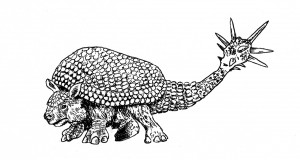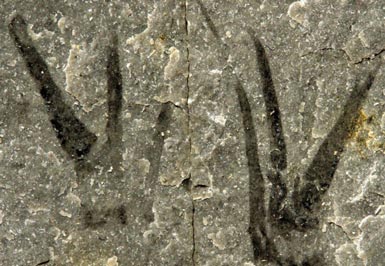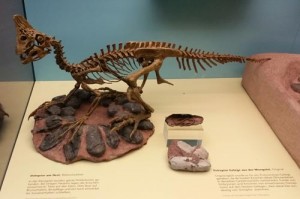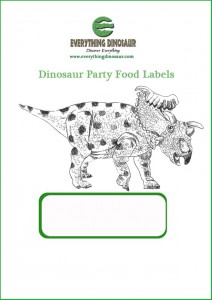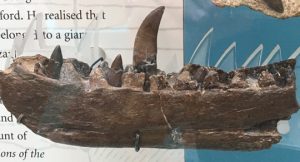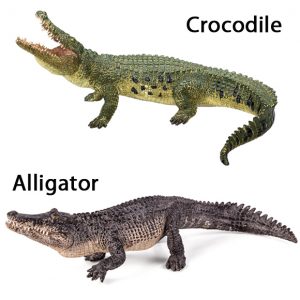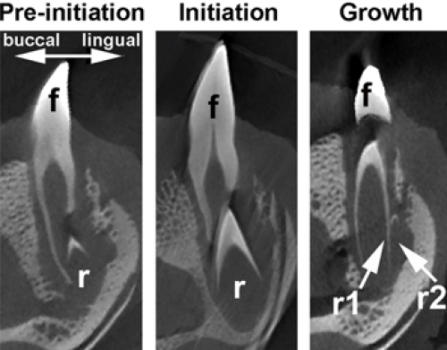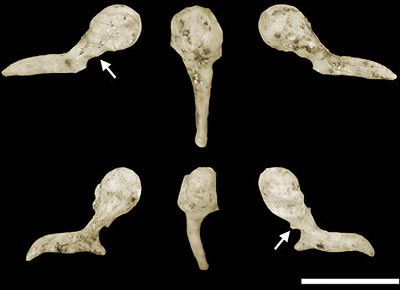Ichthyosaur Evolution Just Got a Lot More Complicated
Ichthyosaurs were a group of marine reptiles that superficially resembled dolphins. These streamlined, viviparous (giving birth to live young), predators seem to have evolved in the Early Triassic and became extinct towards the end of the Cretaceous. Ichthyosaur fossils have been found all over the world, however, despite the wealth of fossil material (or perhaps because of it), there are a number of mysteries surrounding this Order that puzzle palaeontologists. For instance, they do seem to be at least superficially, the best adapted to life in a marine environment when compared to the other types of marine reptile, the crocodile-like metriorhynchids, the mosasaurs, the long-necked plesiosaurs and their shorter-necked relatives the pliosaurs.
Ichthyosaurs
However, despite being very well suited to a nektonic lifestyle and there being a growing body of evidence to suggest that these types of “fish lizards”, were becoming better and better adapted to life in the open oceans as the Jurassic gave way to the Cretaceous, they still became extinct long before the Cretaceous mass extinction event that saw the demise of the other types of Late Cretaceous marine reptile.
A Scale Drawing of a Typical Ichthyosaur
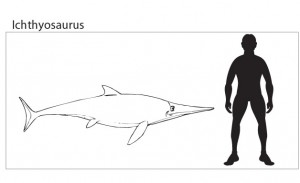
A typical “dolphin-like” ichthyosaur.
Picture credit: Everything Dinosaur
The Order Ichthyosauria
The Order Ichthyosauria suffered a series of extinctions with three major extinction events identified over the duration of the Mesozoic. As a result, those types of ichthyosaur that survived into the Cretaceous from this Order’s Jurassic heyday were believed to a single branch of what had been a diverse clade. The Cretaceous ichthyosaurs were all relatively similar in their body plans and morphology and were believed to have shared a common Late Jurassic ancestor. The lack of variation in Cretaceous ichthyosaur body types, the general lack of diversity in the Ichthyosauria, was believed to have played a significant role in their ultimate demise during the Cenomanian faunal stage of the Cretaceous.
The publishing of a scientific paper (Biology Letters), outlining the research undertaken on a partial ichthyosaur fossil specimen found in Iraq, may change the way in which the Cretaceous ichthyosaurs are viewed. This ichthyosaur, named as Malawania anachronus (Mal-ah-won-nee-ah a-nack-kron-us), seems to contradict the long-held theories. Malawania represents a “ghost lineage of ichthyosaurs”, it resembles a more primitive form of this marine reptile Order, it does not appear to be closely phylogenetically related to other known Cretaceous ichthyosaurs.
Ichthyosaur Fossil
The fossil which consists of fragments of skull bones including a partial sclerotic ring (ring of bone around the orbit) and much of the front portion of the animal was discovered by British geologists exploring Kurdistan (north-eastern Iraq) in the 1950s. At the time of its discovery, the slab of fossil material was not being treated with much reverence. As one of the authors of the scientific paper outlining the study of this fossil, Dr Darren Naish points out:
“Preserved within a large, flat slab of rock, it was being used as a stepping stone on a mule track.”
The Fossilised Remains of Malawania anachronus
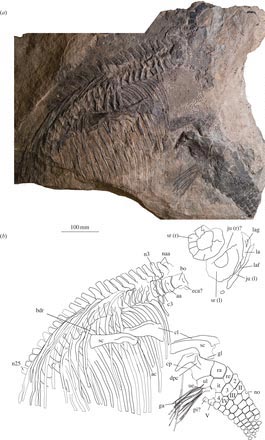
The picture shows the fossil slab and a drawing illustrating the location of the fossil material.
Picture credit: Biology Letters
A Significant Fossil Specimen
Study of the specimen began during the 1970s with ichthyosaur expert Robert Appleby, then of University College, Cardiff. Although he recognised the significance of this fossil discovery, he unfortunately passed away before determining the precise age of the specimen. However, the research into this strange ichthyosaur, one of only two ichthyosaur fossils known from the Middle East, was taken up recently by a team of international scientists and fittingly the contribution of Robert Appleby is acknowledged as he is credited on the list of authors for the scientific publication.
The research team conclude that this fossil contradicts the previous theories about the evolution and extinction patterns seen in the Ichthyosauria. Lead author Dr Valentin Fischer (University of Liege, Belgium) and his colleagues have named the specimen Malawania anachronus, the name means “out of time swimmer”, as despite being Cretaceous in age, the ichthyosaur represents the last known member of a kind of ichthyosaur which was believed to have become extinct during the Early Jurassic.
Analysis of the micro-fossils found on the slab of rock which contains the ichthyosaur specimen, analysis of spores and pollen grains that have been preserved indicate that this ichthyosaur lived approximately 125 million years ago (Barremian faunal stage of the Early Cretaceous).
The research team support this assertion by providing a cladistic study of the known ichthyosaur fossil material to re-design the “Fish Lizards” family tree. Here is evidence of a ancient, primitive Ichthyosaur assigned to the Thunnosauria group of ichthyosaurs that seem to have originated in the Late Triassic. This study suggests that in some parts of the world, primitive ichthyosaurs survived relatively unchanged for more than sixty million years.
Commenting on the implications for this research, Dr Fischer stated:
“Malawania’s discovery is similar to that of the Coelacanth in the 1930s: it represents an animal that seems ‘out of time’ for its age. This ‘living fossil’ of its time demonstrates the existence of a lineage that we had never even imagined. Maybe the existence of such Jurassic-style ichthyosaurs in the Cretaceous has been missed because they always lived in the Middle-East, a region that has previously yielded only a single, very fragmentary ichthyosaur fossil.”
The phylogenetic analysis undertaken by the research team suggests that several ichthyosaur groups that appeared during the Triassic and Jurassic geological periods may have survived into the Cretaceous. This brings the extinction phases of the Ichthyosauria into doubt. For example, according to this new study, the supposed end of the Jurassic extinction event may not have occurred. The fossil record for the Ichthyosauria shows a very different pattern of extinction when compared to known, accepted data on other marine reptile groups.
The Evolution of the Ichthyosauria
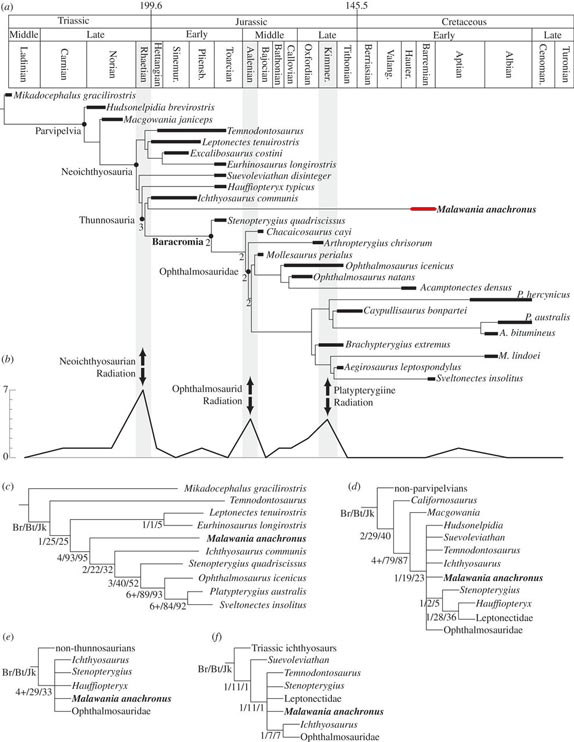
A table compiled by the research team that explores the evolution and radiation of the Ichthyosauria.
Table credit: Biology Letters
Malawania anachronus
The position of Malawania anachronus is shown by the red line. The chart at the top records the passage of time from the Middle Triassic to the Late Cretaceous and places known fossil material on this chronological scale. The line graph below shows the proposed main periods of radiation of the Ichthyosauria and the herring bone diagrams at the bottom shows the proposed phylogenetic relationship between different genera.
When this research is taken together with the 2012 literature on the discovery of a new species of German ichthyosaur known as Acamptonectes densus, another type of ichthyosaur known as an ophthalmosaur that may have survived into the Cretaceous, the discovery of Malawania revolutionises how palaeontologists view the evolution of this type of marine reptile.
To read more about this discovery: New Ichthyosaur Species Swims into View,
There is growing evidence to suggest that the ichthyosaurs remained an important and diverse group of marine reptiles, at least into the Early Cretaceous. If this is the case, then their extinction some ninety million years ago becomes even more of a mystery. Why did this diverse and seemingly superbly adapted group of marine reptiles die out?
A spokesperson from Everything Dinosaur suggested:
“This new research certainly muddies the waters somewhat when it comes to the final demise of the Ichthyosauria. If they had been a small, homogeneous group filling very similar niches in the food-chain of the oceans then they could have been very vulnerable to extinction. However, this new evidence suggests that this was not the case, the ichthyosaurs were more diverse than previously thought. Perhaps the evolution and rapid radiation of the teleosts (modern ray-finned fishes) had an effect, at this moment in time, it is a question of having to re-think accepted theories.”
The Evolution of the “Fish Lizards” Shows that Something “Fishy” may Have Been Going On
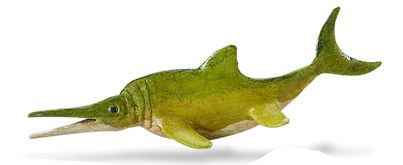
An Ichthyosaurus model.
Picture credit: Everything Dinosaur
As other areas of the Middle East are explored, perhaps more marine reptile fossils will be found and further evidence for the radiation and the eventual extinction of the Ichthyosauria will come to light.
To view models and replicas of ichthyosaurs and other ancient marine reptiles: CollectA Prehistoric Life Figures.



